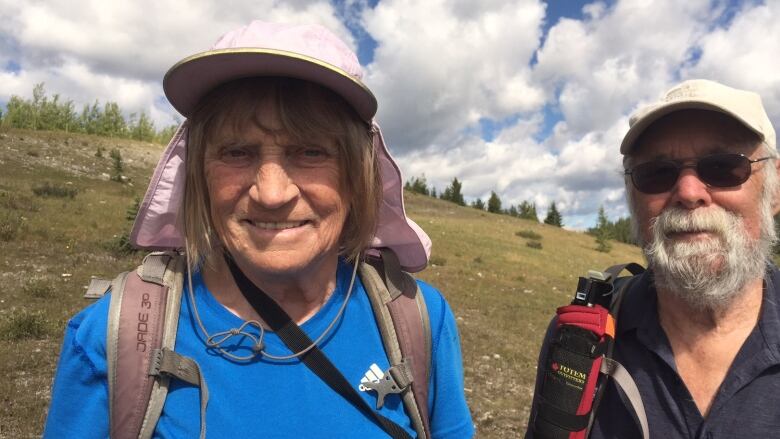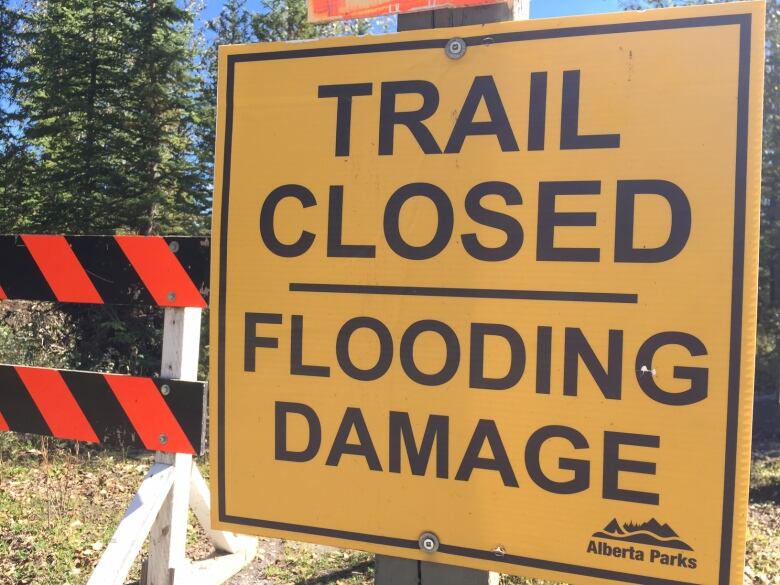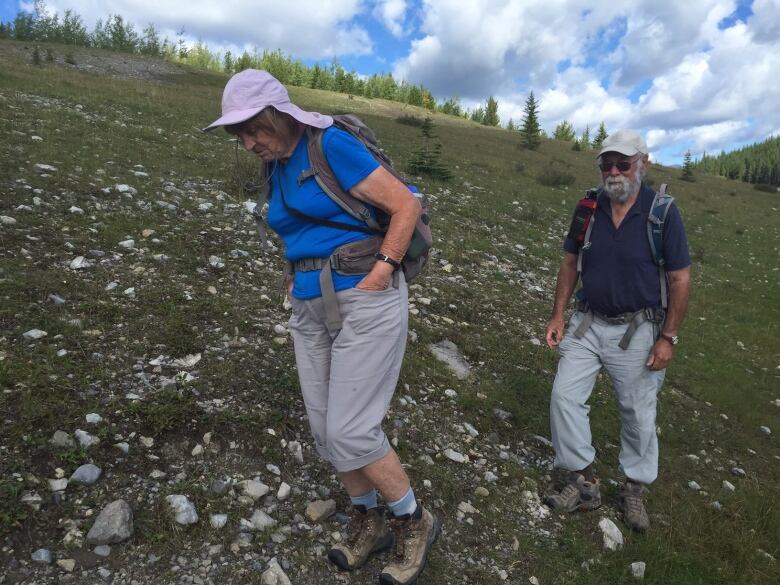Kananaskis trail guide author could spend 7 years revising books, thanks to 2013 flood
Gillean Daffern estimates more than 70% of hikes in K-Country were affected

A well-known Alberta trail guide author says she has a lot of revision work ahead of her, thanks to damage related to the 2013 flood.
"If you count the official trails in with the unofficial trails, I'll say about 70 to 80 per cent were affected in some way,"saidGilleanDaffern.
"It all takes quite a lot of time doing all of this, and I think we`re looking at seven years until the time I`m finished."
If you've been a serious hiker, biker or backpacker inKananaskisCountry over the past three-and-a-half decades, there's a good chanceDaffernhas helped you find your way.
Daffern has been publishing outdoor-related books since 1979 throughRocky Mountain Books.Her husband, TonyDaffern, quit his job and joined her a few years later.
They've since sold the company, but continue towrite and publish.
Many trail users will know her as the author of the five-volume Kananaskis Country Trail Guides. She has also publishedguides on popular dayhikes and recently co-authored the book, The Great Kananaskis Flood.
Revision work

While she regularly revises her guides to address trail changes, Daffern has never encountered the scale of revisions brought on by the 2013 flood. She's currently planning to revise fourguides.
"A lot of the trails that were close to the rivers have disappeared, you know, because the rivers and creeks have changed their courses," she said.
A lot of the trails that were close to rivers have disappeared.- Gillean Daffern
Daffern and her husband have been re-tracing their steps along several flood-affected trails. Each trip she notes changes, takes photos and then heads home to rewrite text and change her maps. Daffern is also a graphic designer, and produces each book before sending it to the publisher.
Now in her 70s, Daffern started that revision work last year. She said she'sup for the job and seems unfazed by the task ahead.
"It doesn't surprise me, any of this, because this is what you expect. Trails change all the time," she said.
While Daffern has been noting the changes, the province said it's been working on repairs.

Trail repairs
Jill Sawyer with Alberta Environment and Parks estimates more than 77 kilometres of official trails were damaged, and 115 bridges were either damaged or washed away.
She said trail crews and teams of volunteers have been working on repairs over the past three years and that trail-related repair work is nearly complete in park areas across K-Country.
"People will see a difference, but it's not going to be a completely new experience," she said.
"Some of our flagship trails have been re-routed. Probably the biggest one would be Ribbon Creek. It was in the creek bed and now has been re-routed."
Repair crews have also been working on trails that cross public lands along the eastern slopes of the Rockies. Officials estimate the work on designated trails in that area, including hiking, equestrian and off-road vehicle trails, is about 60 per cent complete.
However, that workdoesn't include most unofficial trailsacrossK-Country.

Unofficial Trails
Veteran hiker Paul Bleile saidthe effects of the flood have made some trails harder to follow, especially along waterways.
"In some cases they're just not discernable. You run into a 10-metre stretch, a 50-metre stretch, and you think, 'OK, we're on a trail' and then that's it," he said.
A lot of those unofficial trails are included in Daffern's books.
"There's still a lot in the backcountry that needs to be done yet," she said.
"The unofficial trails, of course, nothing's been happening with them unless the outfitters that go in there do something."
Since the flood, the Dafferns have encouraged trail users to access their web site kananaskistrails.com to share information aboutconditions.
Despite all the work ahead of her, Daffern said she's determined to update her work,motivated by the opportunity to continue exploring Alberta's backcountry.
"I like finding out new places, maybe a hidden waterfall, finding out about the history of an area. And I want to pass it on to other people, so they get to enjoy it as well," she said.












_(720p).jpg)


 OFFICIAL HD MUSIC VIDEO.jpg)
.jpg)



























































































